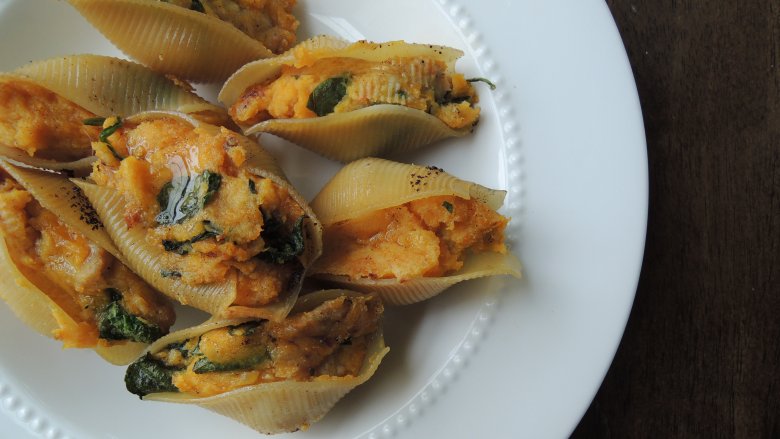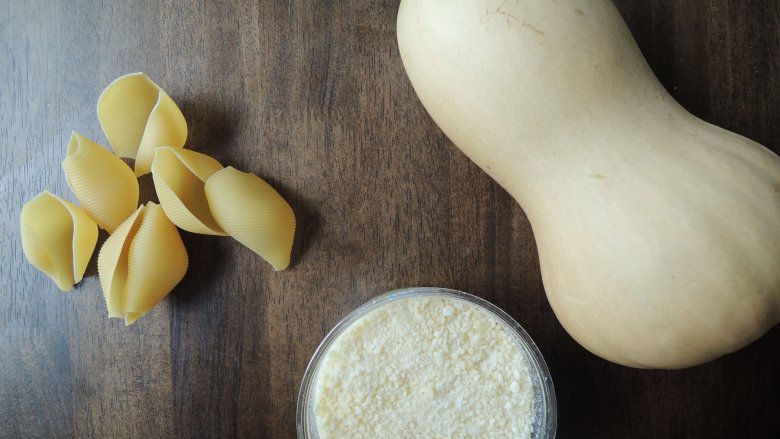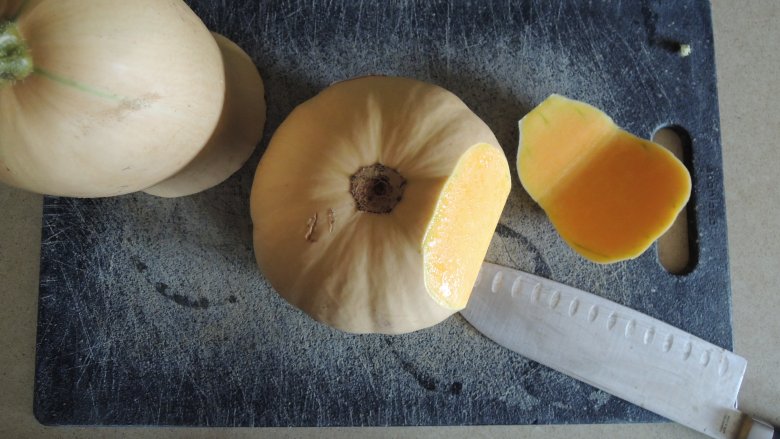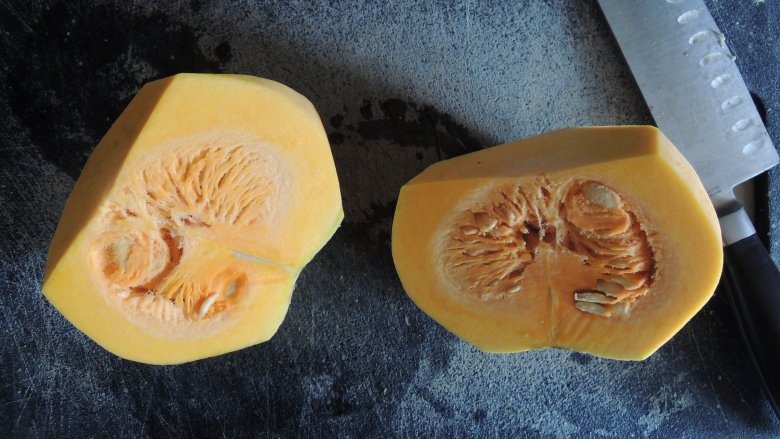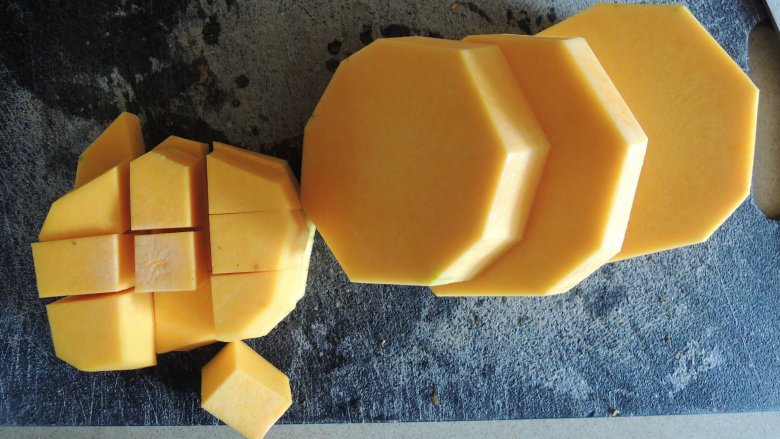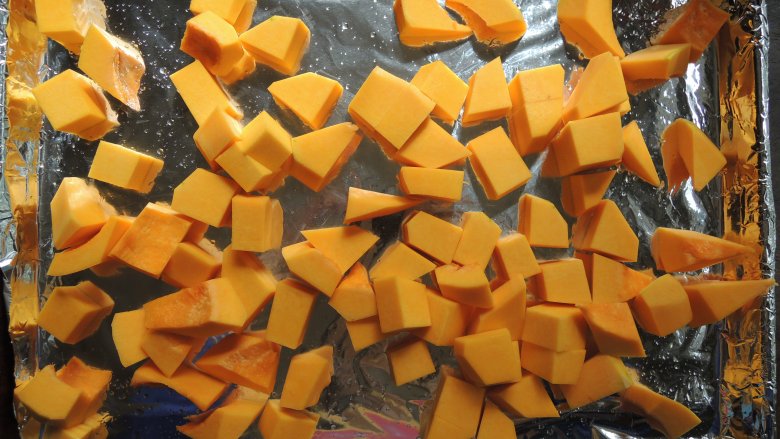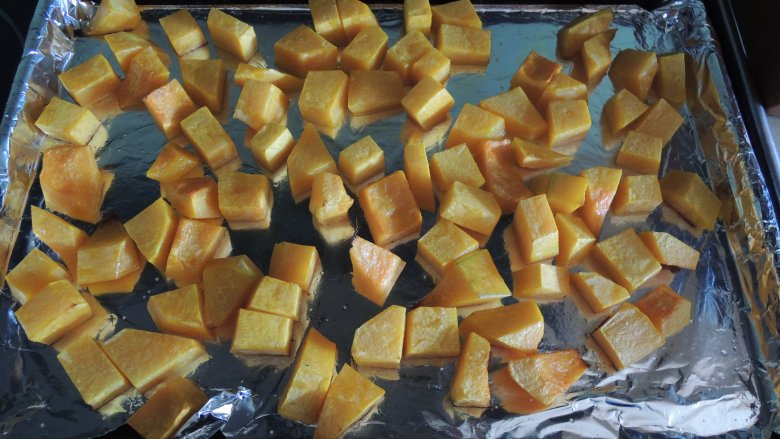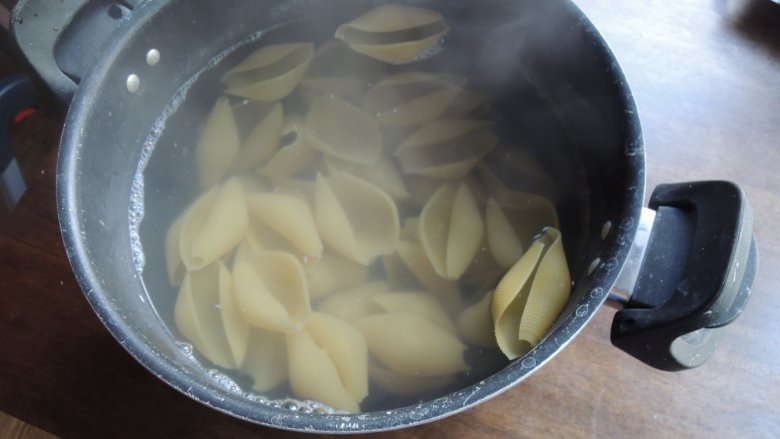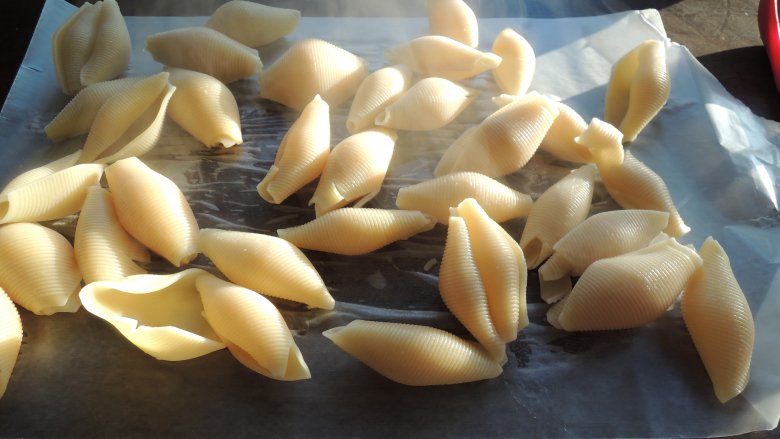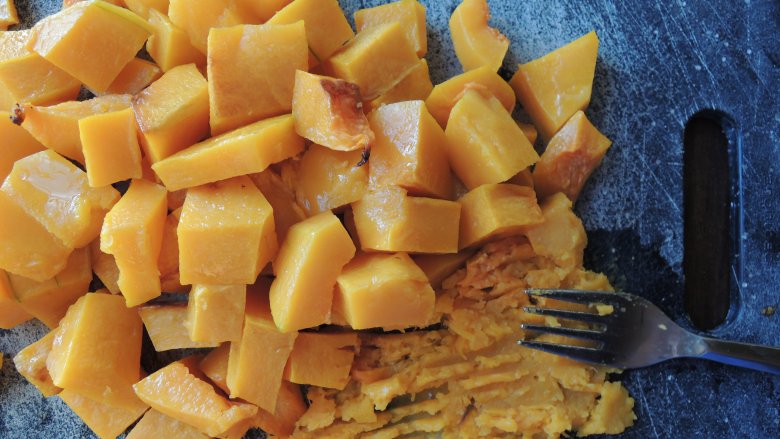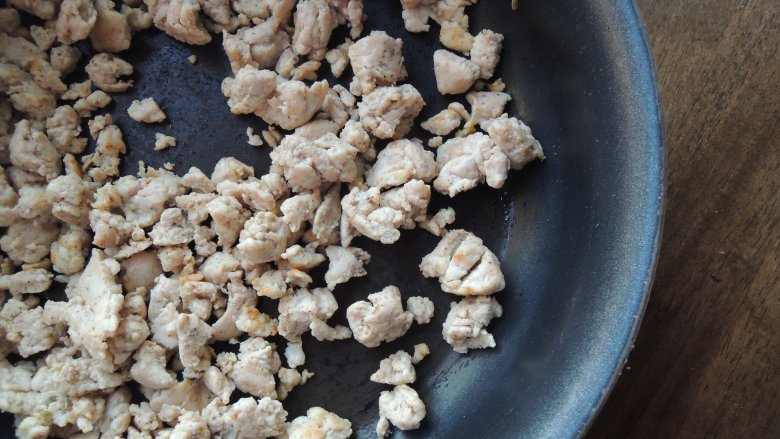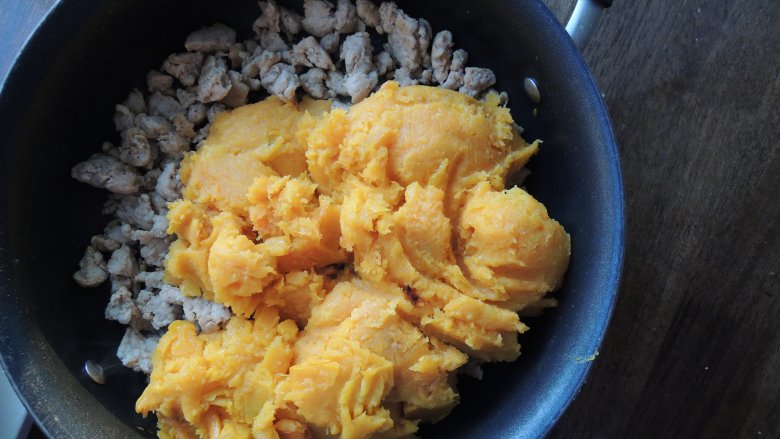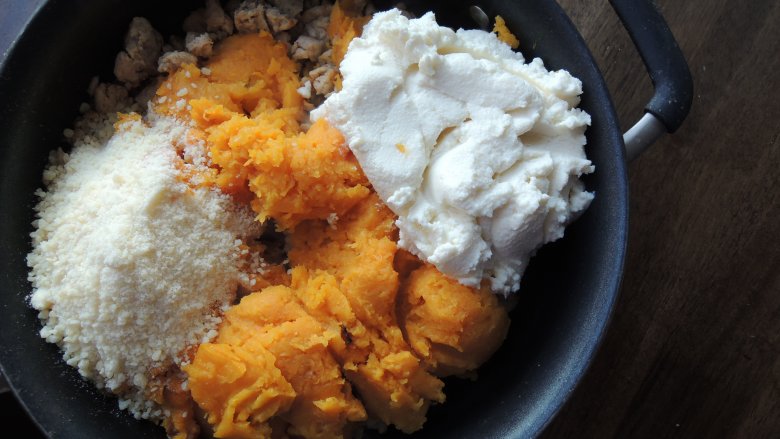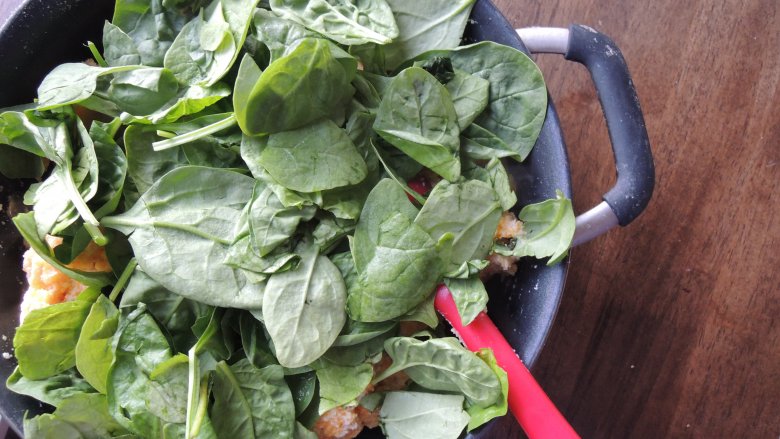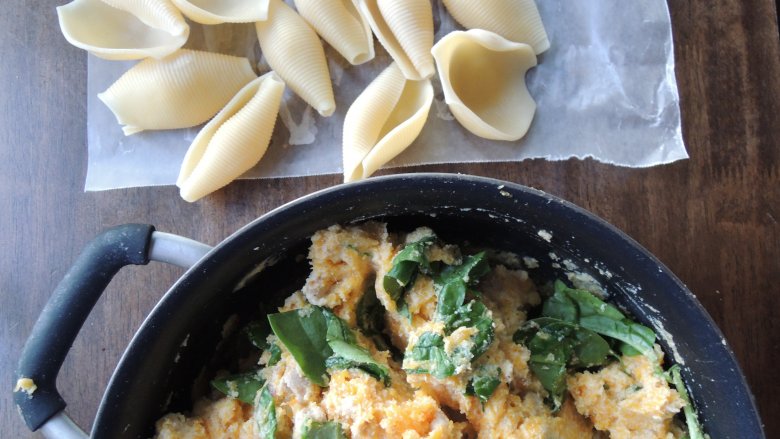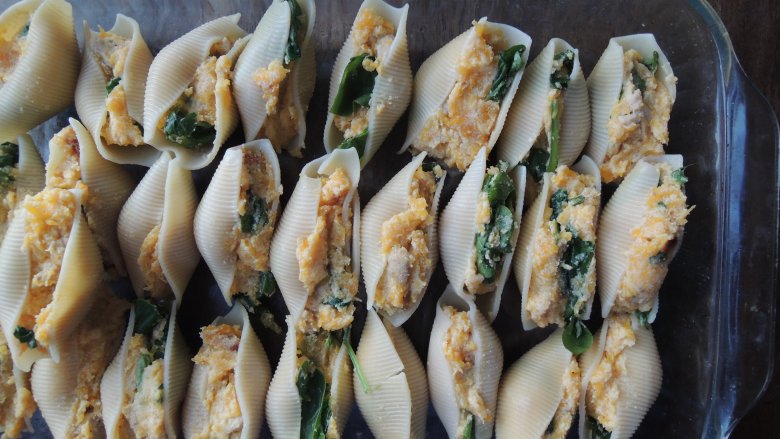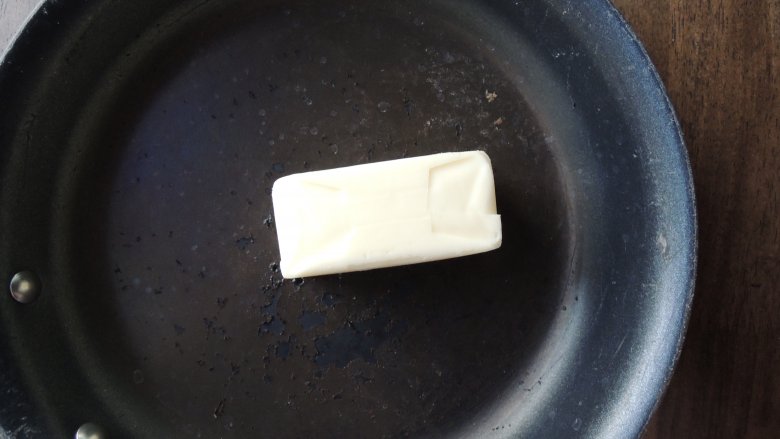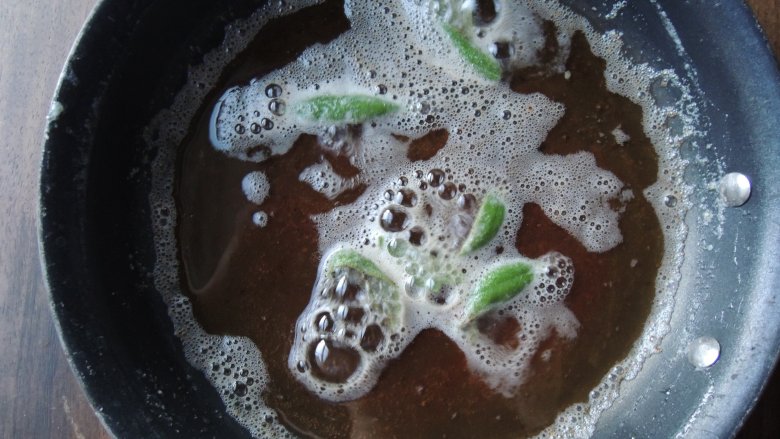Butternut Squash Stuffed Shells Recipe
Can you feel it? Slowly but surely the days are changing. The mornings are just a bit cooler, and the sun is setting a touch earlier. Fall is coming, and while it's been an amazing summer full of travel and pool days, I am ready. I'm ready for leather boots, cozy sweaters, and pumpkin spice lattes. I'm also ready for all of the amazing fall produce. Fresh apple and pumpkin dishes are calling my name, but most importantly butternut squash is back. This humble little squash is so versatile and adds an unbelievable creaminess to any dish.
Never has butternut squash shone like it does in these butternut squash stuffed shells. Creamy mashed squash is combined with spiced sausage, savory cheeses, and fresh spinach to bring all the best fall flavors to your meal. Not to mention the sage browned butter sauce to top it off! The best part? You don't have to wait for cold temperatures to enjoy this hearty dish. Whip it up this weekend for a fun and relaxing family meal.
Gather your ingredients
Start by assembling all of your ingredients. For the jumbo shells, you can use traditional or whole wheat pasta. Choose a medium to large butternut squash to ensure you have enough filling for all of the shells. Then go ahead and measure out the ricotta, mozzarella, and Parmesan cheeses.
The sage browned butter sauce is very rich. If you'd like to cut back on the calories, simply use less butter. However, it's pretty incredible, so don't skimp too much on the best part.
A full list of ingredients and step-by-step instructions can be found at the end of this article.
Prepare the squash
Start by peeling the butternut squash. The easiest approach is to first cut the squash in half width-wise. Then stand both sides up with the cut sides down. Start thinly slicing the peel off of the butternut squash with a sharp knife, starting at the top and working your way down. Be careful as the knife could easily slip. Then discard the peel.
Remove the seeds
Once both halves of the butternut squash are peeled, take the bottom rounded half and cut it in half again. Using a large spoon, scoop out all of the seeds and pulp.
Dice the squash
Discard the seeds and pulp. Then cut the squash into round slices. From there, cut the slices into one-inch pieces.
Toss with olive oil
Place the diced butternut squash on your prepared baking sheet and drizzle with olive oil. Then sprinkle with kosher salt and toss with your hands to coat each piece of squash. Place the squash in the preheated oven and cook for about 20 minutes.
Bake and cool
Once the squash is tender and slightly browned, remove it from the oven. Set the pan aside to cool completely before handling. When you press down on the squash with your finger or a fork, it should be soft.
Boil the shells
Meanwhile prepare the shells. While the squash is baking, bring a large pot of salted water to a boil. The salt in the water will prevent the shells from sticking together, so be sure to add plenty of kosher salt.
Once the water is boiling, pour in the 12 ounces of shells and cook according to the package instructions, stirring every couple minutes.
Cool the shells
Once the shells are cooked and tender, drain the pasta water and pour the shells onto a sheet of wax paper to cool. The shells should be completely cooled before handling them. If you notice some shells stuck together, gently separate them with a wooden spoon.
If any of the shells ripped or came apart in the water, don't worry. You most likely will have a few leftover, so it's okay to toss those ones.
Mash the squash
Once the cooked squash has cooled, use the back of a large fork or potato masher to mash it together. If you'd like to save time in this recipe, you can prepare and mash the squash ahead of time and keep in the refrigerator. The mashed butternut squash will keep in your refrigerator for up to two days.
Cook the sausage
Now it's time to make the filling for the shells. Place a large saucepan over medium heat and drizzle with olive oil. Once the oil is heated, add the half pound of Italian turkey sausage, breaking apart with a wooden spoon. Cook the sausage until it is cooked through and no longer pink, about five minutes.
Add the squash
Next add the mashed squash. Combine with the turkey sausage and cook until the squash is warmed through. If you prepared your butternut squash ahead of time and it just came out of the refrigerator, this will add just a couple minutes to the cooking process.
Add the cheese
Next add two cups of ricotta cheese, half cup of shredded mozzarella cheese, and half cup of Parmesan cheese. Adding all of these ingredients will start to fill up your saucepan, so very carefully fold the mixture together. Sprinkle in the garlic salt and stir until the cheeses are melted and warmed through.
Wilt the spinach
Remove your pan from heat and add the two cups of fresh spinach leaves. Two cups will look like a lot, but as soon as it wilts into the mixture, you'll barely notice. Carefully fold the fresh spinach into the hot filling mixture until the leaves are wilted and dark green.
Mix the filling
Continue to stir the mixture until it's fully combined. Allow to sit for a few minutes until it's cool enough to handle. Next, line all of your intact pasta shells in a nine by 13-inch baking dish.
Fill the shells
Starting with the first shell, use a small spoon to stuff the filling into the shell, filling the entire shell. The shells should be filled, but not overflowing. Continue working until you've filled all of the shells or run out of filling. If you're left with extra filling at the end, add it to any shells that are just lightly filled. Place the shells in the oven and bake until hot, about 20 minutes.
Prepare the sauce
While the shells are baking, it's time for the secret ingredient... butter! I don't usually cook with a ton of butter, but it's just too good to leave out on this one. I recently took an Italian cooking class at our local public market, and I was amazed/horrified by how much butter the chef used in just about every dish. There's a reason why these stuffed shells taste like they came from a restaurant, and that reason is butter.
Heat a medium skillet over medium heat and add the butter. Once it starts to melt, lower the heat to low. We want to create a browned butter sauce, but it can easily burn if the heat is too high, so play it safe with low heat. Cook the butter, stirring constantly, until it's a golden brown color. This should take about ten minutes.
Add the sage
Next we're going to infuse our butter with sage. Toss in the fresh sage leaves and cook until they're crispy. The leaves should start crackling right away, and you'll notice the butter bubbling up.
Once the sage leaves are crispy, you can discard them or remove them from the butter and use them as garnish for your dish. Remove the cooked shells from the oven, and drizzle them with your sage browned butter sauce. Top with a crispy sage leaf and plate the dish. Then just sit back and watch as your families eyes widen, as they silently wonder when you had time to attend culinary school.
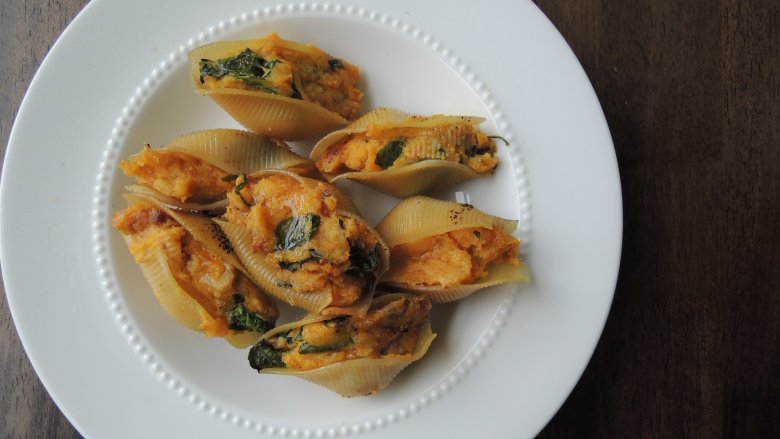
- Extra virgin olive oil
- 1 medium butternut squash
- 1 (12-ounce) box jumbo pasta shells
- ½ pound Italian turkey sausage
- 2 cups ricotta cheese
- ½ cup shredded mozzarella cheese
- ½ cup grated Parmesan cheese
- 1 teaspoon garlic salt
- 2 cups fresh spinach leaves
- ½ cup butter (1 stick)
- 6 fresh sage leaves
- Preheat your oven to 425 degrees Fahrenheit. Line a large baking sheet with aluminum foil and spray with nonstick olive oil spray.
- Carefully peel the butternut squash with a large, sharp knife. Then cut it half widthwise. Cut the bottom half in half again and scoop out the flesh and seeds. Dice the remaining squash into 1-inch pieces.
- Place the diced butternut squash on the prepared baking sheet and drizzle with olive oil. Sprinkle with salt and toss with your hands. Bake for 18 to 20 minutes, until squash is tender. Remove from oven and allow to cool. Once cool enough to handle, mash the butternut squash with the back of a fork and set aside. Reduce your oven temperature to 350 degrees Fahrenheit.
- While the squash is baking, bring a large pot of salted water to a boil and add the jumbo shells. Cook according to the package instructions, stirring occasionally to prevent them from sticking together.
- Once the shells are cooked, drain the water and pour the shells onto a piece of waxed paper to cool.
- While the shells are cooling, prepare your filling. Heat a large saucepan over medium heat and drizzle with olive oil. Add the uncooked turkey sausage and saute until cooked through and no longer pink, about 5 minutes. Add the mashed butternut squash, garlic salt, ricotta cheese, mozzarella cheese, and Parmesan cheese. Mix together and heat until the cheeses are melted.
- Remove your saucepan from heat and add the fresh spinach. Fold into your filling mixture until wilted. Once the filling has cooled slightly, place the cooked shells in a 9x13-inch baking dish and fill with squash mixture. Place the shells in the oven and bake for 20 minutes.
- While the shells are baking, prepare the sauce. Place a medium saucepan over medium heat and add the stick of butter. Once the butter starts to melt, reduce the heat to low to medium. Cook the butter until it is a golden color, for about 10 minutes. Once the butter is golden brown, add the fresh sage leaves and cook until they are crisped.
- Remove the shells from the oven and drizzle with the sage butter sauce. Discard the sage leaves unless you'd like to use them for garnish. Enjoy!
Nutrition
| Calories per Serving | 616 |
| Total Fat | 32.7 g |
| Saturated Fat | 17.7 g |
| Trans Fat | 0.6 g |
| Cholesterol | 104.0 mg |
| Total Carbohydrates | 53.3 g |
| Dietary Fiber | 3.6 g |
| Total Sugars | 3.4 g |
| Sodium | 477.2 mg |
| Protein | 27.6 g |
